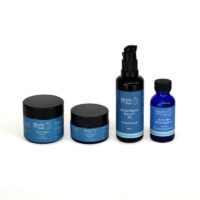Where and How Sun Damage Effects the Skin | Pre-Cancers
The cultural emphasis on encouraging sun exposure led to one of the most common, most costly, and - in the case of melanoma - most dangerous health problems in the United States: skin cancer. The lighter the pigmentation of a person’s skin, the more vulnerable he/she is to sun damage.
Currently, almost 30% of all visits to dermatologists involve the negative effects of sun damage.
Skin pre-cancers (actinic keratoses) and cancers (basal cell carcinomas, squamous carcinomas and melanoma) are by far the most common malignancies in the world.
What's worse, once the signs of sun damage and skin malignancies start, they will continue for years and often decades - even if one totally avoids more sun damage. Why?
And why does the pre-cancer and cancer formation happen decades after you have received the majority of your sun damage?
The explanation is based on where and how the sun damage affects the skin.
Lip Health
Most people don’t realize the importance of lip health. It is one of the most dangerous locations to develop sun damage and skin cancer.
Persistent dryness (xerosis) and cracking of the lips (especially the lower lip) is commonly caused by chronic sun damage (actinic cheilitis). Actinic cheilitis creates severe inflammation that leads to destruction of collagen and elastin - and can kill fibrocytes that build and maintain the skin.
While moisturizers and other lip products can slow future injury, they do not address this underlying damage, and therefore offer little or no rejuvenating benefit. Sun damage, pre-cancers and cancers interfere with the skin's healing process and can pose significant dangers. Actinic keratoses on the lower lip can progress to squamous cell carcinoma. In fact, the lip area is one of the only places on the skin that has a predisposition to metastasize into the rest of the body.





